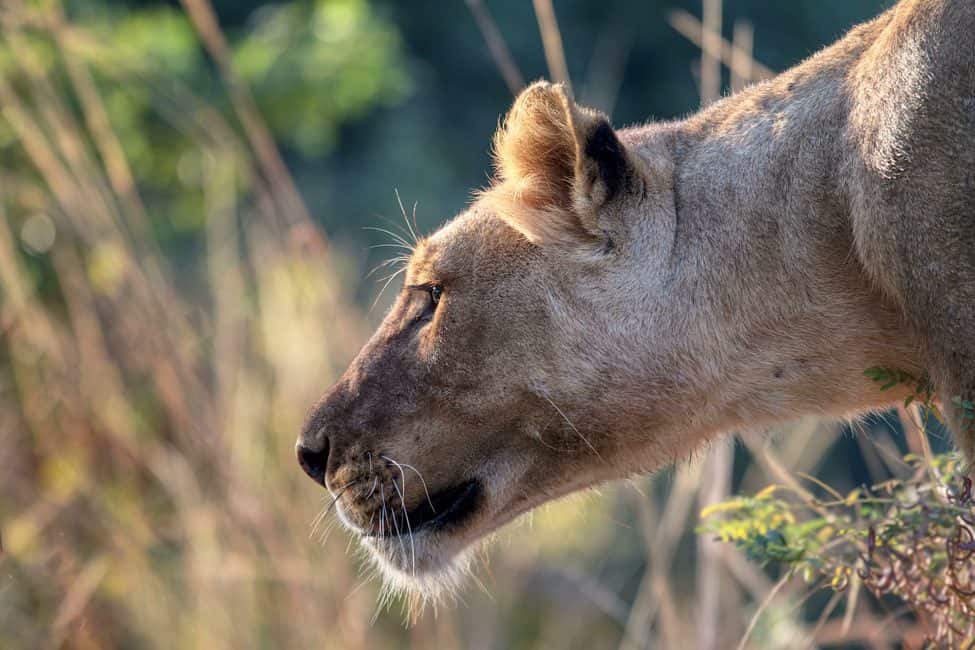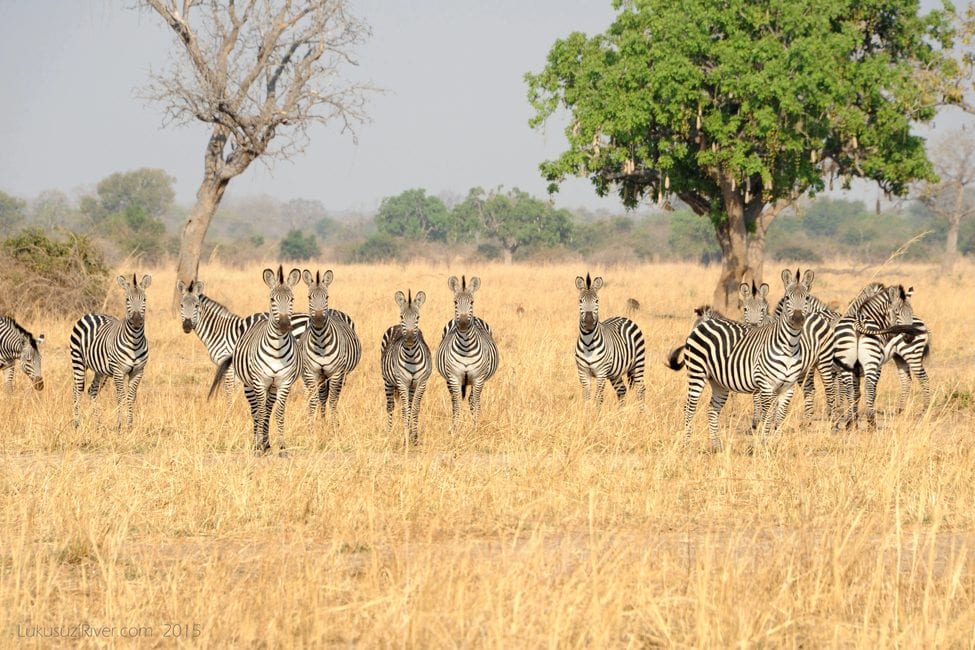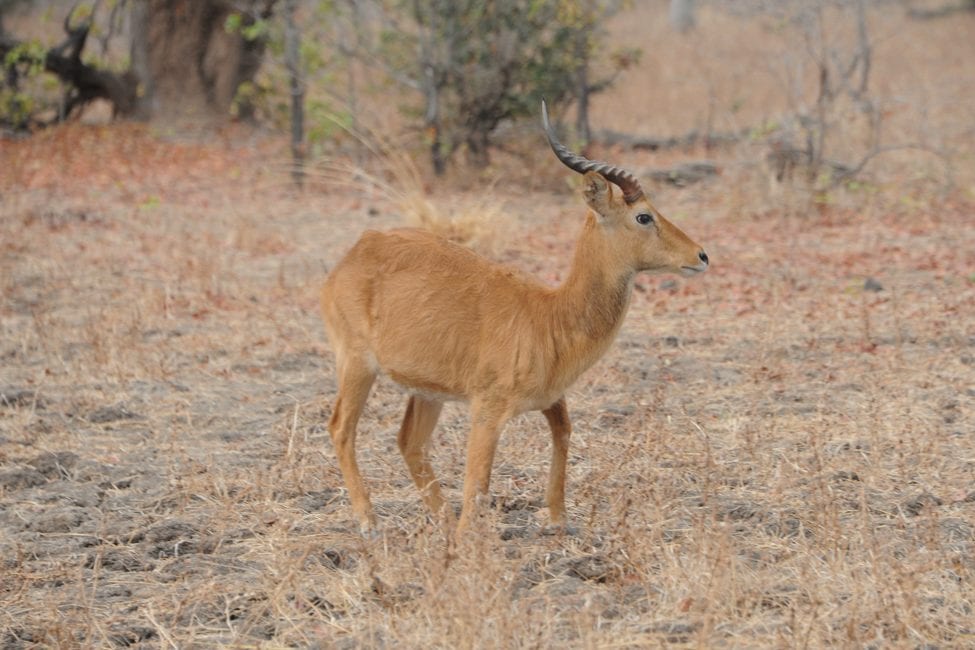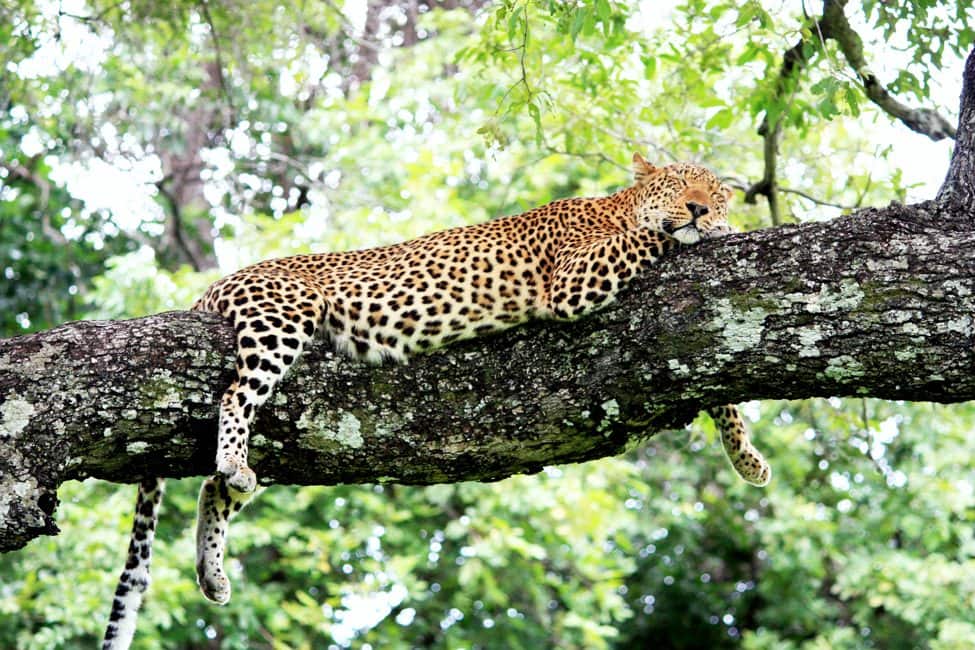Young elephants tussle in South Luangwa National Park, Zambia. Photo by Christian Weiss.
The Amazing National Parks of the Luangwa Valley
Protected by the steep Muchinga Escarpment to the west and the Luangwa River to the east, Zambia’s Luangwa Valley is rich with wildlife. Floodplains are dotted with lagoons that offer respite and refreshments to animals year-round. Dense woodlands, airy savannas, and open grasslands support a variety of large mammals.
In the waters, find hippos, crocodiles, and colorful shorebirds. On land, look for Thornicroft’s giraffes, African bush elephants, Crawshay’s zebras, Cookson’s wildebeest, and Cape buffalos. Charismatic predators include lions, leopards, spotted hyenas, and African wild dogs. Pangolins may also live here, but are seldom seen.
Because of its natural beauty, much of the Luangwa Valley was designated as a game reserve in 1938. It was one of the first places in Africa to pioneer conservation-based tourism, abandoning trophy hunting in favor of photographic and walking safaris.
After Zambia’s independence in 1964, the protected area was converted into three national parks:
- South Luangwa National Park, on the western bank of the river, is the most popular of the three parks.
- North Luangwa National Park, also to the west of Luangwa River, offers a more secluded experience.
- Luambe National Park, a small park on the eastern bank of the river, is beloved among birders and experienced safari-goers.
South Luangwa, North Luangwa, and Luambe National Park are all wonderful places to visit for walking safaris and game drives. And mountain biking is an option in some areas of South Luangwa National Park. Some lodges and camps offer game viewing by boat during certain times of year.

A lion goes on the prowl in South Luangwa National Park. Photo by Ian McGrory.
South Luangwa National Park
South Luangwa National Park is the most famous of the three parks. Sprawling over roughly 3,500 square miles, safari-goers can easily access it by road and air. Spend enough time here, and you could spot as many as 60 different mammal species and 400 bird species.
But animals aren’t the only attraction. South Luangwa has an enormous variety of plant life, including miombo and mopane woodlands, large stands of ebony trees, and huge baobabs. At night the star-gazing is excellent, particularly in the dry season.
South Luangwa National Park offers a variety of accommodations. These include lodges, permanent tented camps, and mobile camps that accompany multi-day walking safaris. Many feature photographic hides for up close views of wildlife. You can stay in the park itself or near its eastern entrance at Mfuwe.
Want an idea of what a safari to South Luangwa might be like? Check out our 10-Night Zambia Adventure Sample Itinerary.

A herd of zebras gather in North Luangwa National Park. Photo by Leo Klemm.
North Luangwa National Park
At 1,800 square miles, North Luangwa National Park is about half the size of its more famous southern neighbor. It features not only the Luangwa River, but also the Mwaleshi River, which flows west through the center of the park.
The most popular way to visit North Luangwa is on a walking safari with an approved safari operator. Ujuzi can arrange this for you.
With many of the same animals as South Luangwa, North Luangwa is perfect for adventurers who want a more exclusive experience. It also is home to a small population of black rhinos, which cannot be found in South Luangwa. That means North Luangwa has all the Big Five game mammals!
Luambe National Park
Luambe National Park is the Luangwa Valley’s best kept secret. At just under 100 square miles and with only one lodge, Luambe gets the fewest visitors of the three Luangwa Valley parks and offers the most private experience.
Lying between South Luangwa and North Luangwa on the opposite bank of the Luangwa River, Luambe hosts many of the same animals, but in lower concentrations. The most common antelopes are pukus, impalas, bushbucks, waterbucks, and kudus.
With 249 bird species recorded in Luambe, visitors have a good chance of seeing larger birds such as the gray-crowned crane, African fish eagle, martial eagle, tawny eagle, and yellow-billed stork. Avid birders will want to look for harder-to-spot flyers such as Pel’s fishing owl, African skimmer, black-backed puffback, and racket-tailed roller. In September and October, huge numbers of carmine bee eaters congregate along the river.
Walking safaris here provide excellent opportunities to see some of Africa’s Little Five animals.
Visiting the National Parks of the Luangwa Valley
Need help deciding which park to visit? Or maybe you want to visit all three? Contact Ujuzi today to explore your options.
Sign up for the Ujuzi Newsletter!
From top travel tips to innovative safaris and conservation movement, get inspired to plan your next African safari!
By submitting this form, you are consenting to receive marketing emails from: . You can revoke your consent to receive emails at any time by using the SafeUnsubscribe® link, found at the bottom of every email. Emails are serviced by Constant Contact






